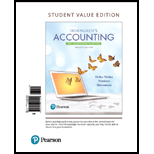
Stock Dividend:
The Stock dividend is the number of shares given as dividend to the shareholders. The Stock dividend is declared first and shares are issued later. There are two journal entries made, one at the time of declaration of stock dividend and another at the time of issuance of shares.
Cash dividend:
The Cash dividend is the amount of dividend paid to shareholders in cash. The Cash dividend is declared first and paid later. There are two journal entries made, one at the time of declaration of dividend and another at the time of payment.
Stock split:
Stock split refers to the dividing one share into two of more shares. It is usually done to make the share available for small investor with smaller value. A stock split does not affect the total stockholder’s equity and it also does not require any
Stockholder’s Equity:
Treasury stock is the shares bought back by the company itself. A company may purchase its own shares and the shares bought back are called treasury stock.
1. Journal entries:
To Indicate:
The journal entries for the given transactions
2. Stockholders Equity Section of the balance sheet:
To indicate: The Stockholders Equity Section of the balance sheet as on December 31, 2018
Want to see the full answer?
Check out a sample textbook solution
Chapter 13 Solutions
Horngren's Accounting: The Managerial Chapters, Student Value Edition (12th Edition)
- I need the correct answer to this financial accounting problem using the standard accounting approach.arrow_forwardI need assistance with this financial accounting question using appropriate principles.arrow_forwardMing Sporting Goods had a balance in the Accounts Receivable account of $780,000 at the beginning of the year and a balance of $820,000 at the end of the year. Net credit sales during the year amounted to $6,400,000. Required: What was the average collection period of the receivables in terms of days?arrow_forward
- A company produces a single product. Variable production costs are $18.2 per unit, and variable selling and administrative expenses are $6.5 per unit. Fixed manufacturing overhead totals $72,000, and fixed selling and administration expenses total $63,000. Assuming a beginning inventory of zero, production of 7,500 units, and sales of 5,200 units, the dollar value of the ending inventory under variable costing would be_.arrow_forwardPlease provide the correct answer to this accounting problem using accurate calculations.arrow_forwardI need help with this general accounting question using the proper accounting approach.arrow_forward

 AccountingAccountingISBN:9781337272094Author:WARREN, Carl S., Reeve, James M., Duchac, Jonathan E.Publisher:Cengage Learning,
AccountingAccountingISBN:9781337272094Author:WARREN, Carl S., Reeve, James M., Duchac, Jonathan E.Publisher:Cengage Learning, Accounting Information SystemsAccountingISBN:9781337619202Author:Hall, James A.Publisher:Cengage Learning,
Accounting Information SystemsAccountingISBN:9781337619202Author:Hall, James A.Publisher:Cengage Learning, Horngren's Cost Accounting: A Managerial Emphasis...AccountingISBN:9780134475585Author:Srikant M. Datar, Madhav V. RajanPublisher:PEARSON
Horngren's Cost Accounting: A Managerial Emphasis...AccountingISBN:9780134475585Author:Srikant M. Datar, Madhav V. RajanPublisher:PEARSON Intermediate AccountingAccountingISBN:9781259722660Author:J. David Spiceland, Mark W. Nelson, Wayne M ThomasPublisher:McGraw-Hill Education
Intermediate AccountingAccountingISBN:9781259722660Author:J. David Spiceland, Mark W. Nelson, Wayne M ThomasPublisher:McGraw-Hill Education Financial and Managerial AccountingAccountingISBN:9781259726705Author:John J Wild, Ken W. Shaw, Barbara Chiappetta Fundamental Accounting PrinciplesPublisher:McGraw-Hill Education
Financial and Managerial AccountingAccountingISBN:9781259726705Author:John J Wild, Ken W. Shaw, Barbara Chiappetta Fundamental Accounting PrinciplesPublisher:McGraw-Hill Education





